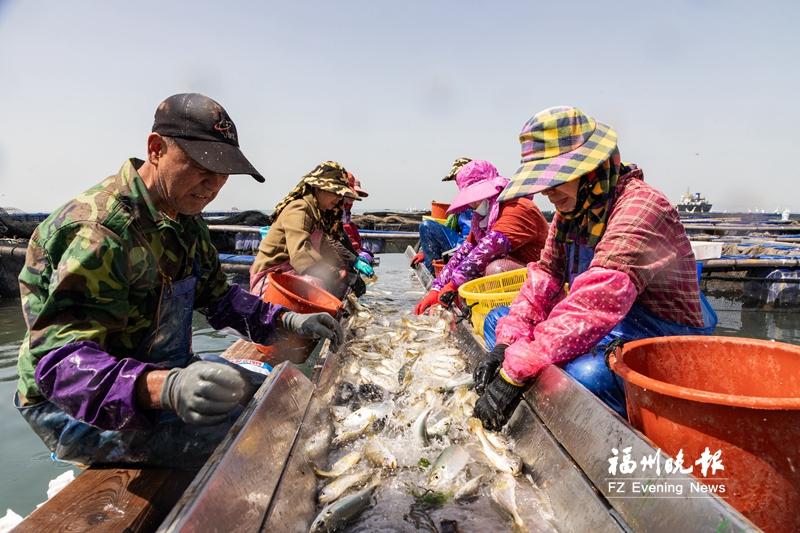Lianjiang Sorts 20 Million Yellow Croakers into Different Groups

The fishermen were busy with fry sorting.
It is the best time for separating yellow croaker fry. Recently, fish farmers in Lianjiang have been making the most of the clear weather to sort the yellow croakers into different groups.
Recently, on the plastic fish rafts in the waters off Dinghai Village, Xiaocheng Town, nearly ten workers were hard at work sorting yellow croaker fry. They first herded the fish into one area, then used nets to transfer them into 5-meter-long U-shaped troughs. After removing any unwanted species, like sea bass, sea bream, and seaweed, they sorted the yellow croakers into three sizes—large, medium, and small—and placed them in separate deep-water cages for further cultivation.
Yellow croaker farmer Lu Tonghui mentioned that this batch of fry was released around the Qingming Festival in 2024. After a year of growth, each fish now weighs around 200 grams, with a total of about 20 million fry. The sorting is expected to be finished by the end of April.
According to reports, yellow croakers show individual variation, and during their growth, some may experience uneven feeding. Sorting the fry is similar to grouping them, which helps regulate stocking density and ensures the fish grow faster and healthier.
According to Lu Tonghui, yellow croakers undergo three stages before they are ready for market: adaptation in small net cages, fattening in larger net cages, and wild-training in deep, open waters.
In the first stage, fry weighing about 1.3 grams are raised in square deep-water cages covering nearly 200 square meters, where they grow to around 250 grams. In the second stage, these yellow croakers, now weighing about 250 grams, are transported in live-water vessels to 30-meter-diameter round deep-water cages, where they continue to develop, aiming to reach around 500 grams. In the third stage, the yellow croakers are moved to a series of deep-sea farming platforms in Dinghai Bay for advanced training,” where they undergo at least six months of wild training to develop firmer flesh. (Fuzhou Evening News Reporter: Zheng Ruiyang; Correspondent: Lian Rongmei)